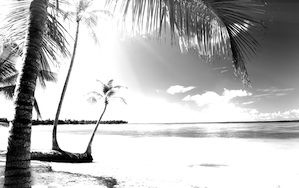But while the world’s top bars are influential and are a good indicator of things to come, are brands starting to see a Mojito malaise? “Not at all. In fact, we are seeing the Mojito become more popular as it is gaining acceptance in areas outside of major urban metros,” says Brandon Lieb, brand executive of Atlantico rum, which also comes in a Platinum version. “While people in London, Miami, New York, etc, have been enjoying Mojitos for a while, the drink is really just now starting to become more popular in other markets. The Daiquiri is also clearly making a major comeback. A classic that if made properly is fantastic.”
As a Cuban rum Havana Club is all-systems-go Mojito, and markets its three-year-old as the authentic, premium choice for the cocktail. “The global category has remained flat, growing just 0.7% on average over the past 10 years. But the popularity of the Mojito is one of the key factors supporting the growth of the white rum category,” says François Renie, communications director at Havana Club. “This has compensated the increasing trend to choose dark rum over white as a mixer in Rum & Cola.”
Overall the Pernod Ricard/Cuban government-owned rum brand rose 4% in value and 2% in volume, and its white styles, Havana Club Blanco and Havana Club 3 Year Old, represent almost two-thirds of its global volumes.
Blanco is concentrated in price-sensitive markets (more on this later) so it is Havana Club 3 Year Old that represents a higher market share and is also showing a faster growth rate. It is this expression that Havana Club wages its market wars with Bacardi. “The 3 Year Old expression is asserting itself as the strongest premium offering capable of conquering the white rum segment in export markets,” says Renie.
With Bacardi Superior having only 18 months of ageing on the clock – and all its colour filtered away – it may be finding it harder to mix with older white rums and convince those to whom age matters. “We managed to take the leadership in some markets from Bacardi. In Germany [excluding flavoured rum] and France we are ahead, but in Britain, between Diageo and Bacardi it’s difficult to find a place in the UK market,” says Renie.
Now that Campari is at the helm with Wray & Nephew, and from this month has taken US distribution rights in-house, it will be interesting to see how far Wray & Nephew’s white flagship style, Overproof Rum, burgeons. Its 63% abv will make it vulnerable to duty, but there is enough interest among bartenders and Jamaican diasporas to give it a fighting chance of becoming a real global player. For now though, as far as white rum is concerned, it is the Cuban styles that rule the international scene.
Local consumption
How much of the white rum world is down to local consumption is hard to put a number on. According to Euromonitor in The Millionaires’’ Club 2012, India accounts for 29% of the rum category’s volume and is seeing growth in the high single digits.
Heading the category is United Spirits’ McDowell’s No 1 Celebration (15.6 million cases in 2011) which is available in white and dark styles. In the Philippines the kingpin rum brand is even bigger at a massive 18.71 million cases, just short of Bacardi’s 19.56 million cases in 2011. By numbers these brands are colossal, but as far as international relevance is concerned, they are largely unacknowledged. That said, Diageo knew exactly what it was doing when it moved for United Spirits a few months back. According to chief executive Paul Walsh at the Diageo’s recent half-year results conference, acquiring large players in emerging markets is key to the group’s strategy.
Almost a third of Havana Club’s global volume is domestic. “Havana Club Blanco is both the bestseller in Cuba and the most accessible rum of our range for Cuban consumers,” says Renie. The style also exists in Italy, the Czech Republic and France but its existence is described as “a commercial move, not a marketing move”. Priced by the Cuban authorities at US$4 a bottle, the brand remains accessible to the locals, something that is important to the company. “We are happy with Blanco at US$4 as we want it to be drunk by Cubans.” Indeed, there is no more powerful image than the bottles, T-shirts and flags festooned across Havana – to a tourist Havana Club is the Cuban rum.




